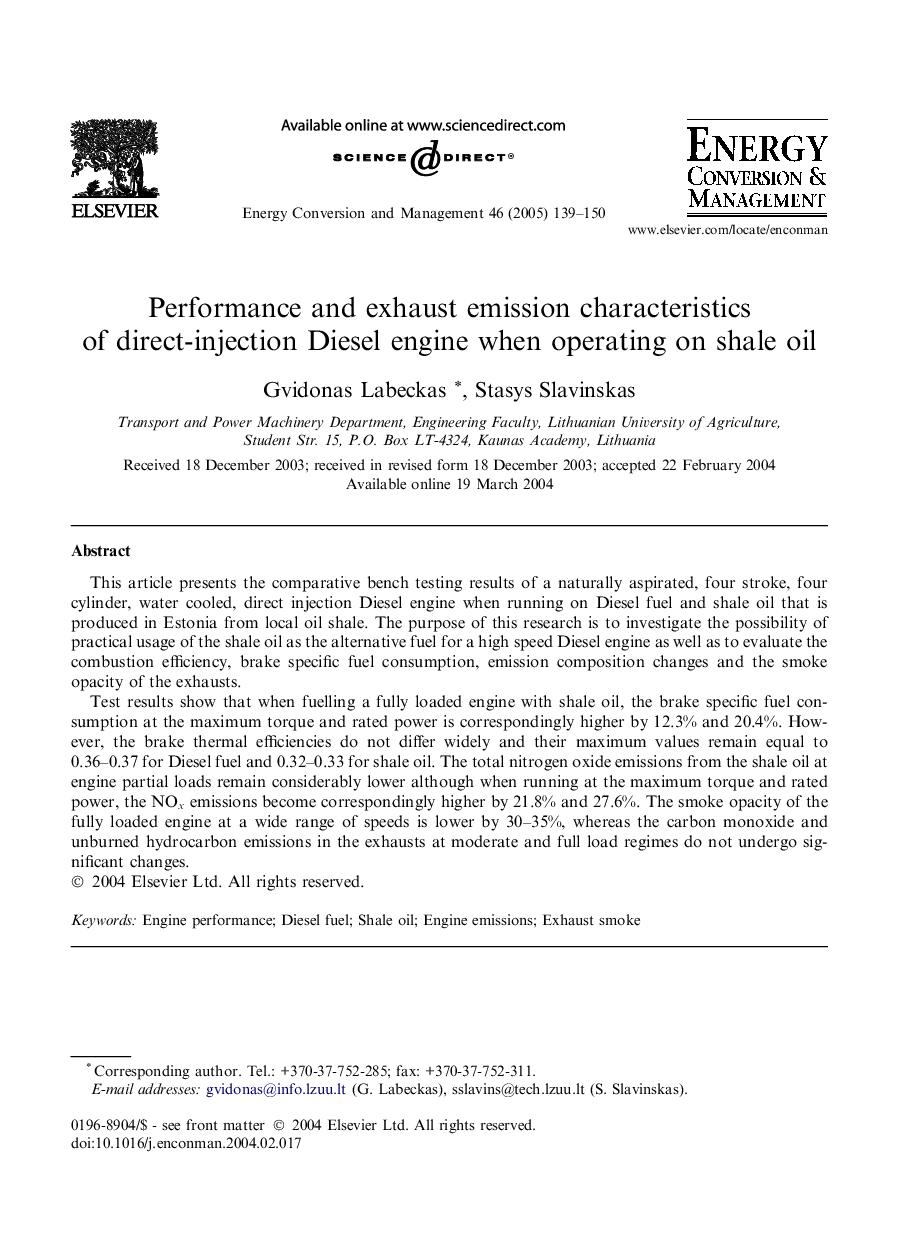| Article ID | Journal | Published Year | Pages | File Type |
|---|---|---|---|---|
| 10415942 | Energy Conversion and Management | 2005 | 12 Pages |
Abstract
Test results show that when fuelling a fully loaded engine with shale oil, the brake specific fuel consumption at the maximum torque and rated power is correspondingly higher by 12.3% and 20.4%. However, the brake thermal efficiencies do not differ widely and their maximum values remain equal to 0.36-0.37 for Diesel fuel and 0.32-0.33 for shale oil. The total nitrogen oxide emissions from the shale oil at engine partial loads remain considerably lower although when running at the maximum torque and rated power, the NOx emissions become correspondingly higher by 21.8% and 27.6%. The smoke opacity of the fully loaded engine at a wide range of speeds is lower by 30-35%, whereas the carbon monoxide and unburned hydrocarbon emissions in the exhausts at moderate and full load regimes do not undergo significant changes.
Related Topics
Physical Sciences and Engineering
Energy
Energy (General)
Authors
Gvidonas Labeckas, Stasys Slavinskas,
